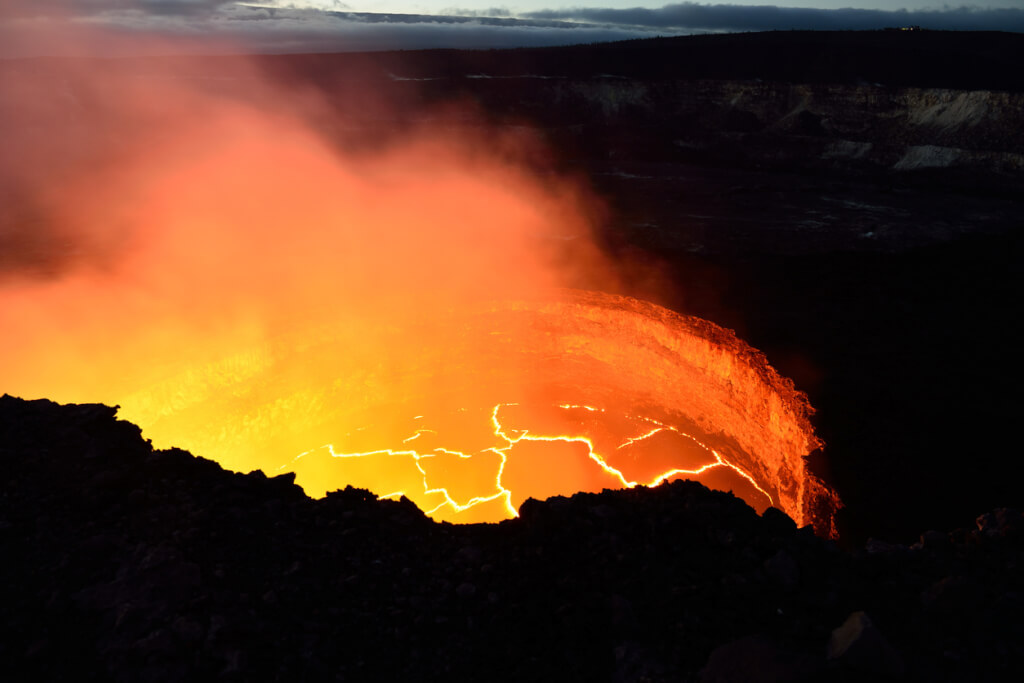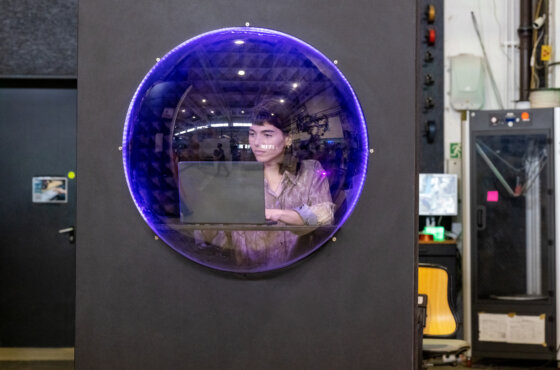Kilauea volcano erupts again in Hawaii: residents are asked to beware of shards of volcanic glass and ash
The Kilauea volcano in Hawaii has begun to erupt. The US Geological Survey announced that the volcano began blazing with lava on June 7, just hours after it issued a warning of a possible eruption. The publication told more about the disaster CBS News.

Photo: IStock
The United States Geological Survey (USGS) said lava eruptions appeared shortly before 04:45 local time, when the Hawaiian Volcano Observatory "detected a glow in Kilauea peak webcam images." These images showed that the eruption began in the crater of the Halema'uma'u volcano.
"Webcam images show cracks at the base of Halema'uma'u Crater, creating lava flows on the surface of the crater floor," the agency said. "Activity is limited to Halema'uma'u and the hazard will be assessed as the eruption progresses."
On the subject: Lassen Volcanic: why you should visit a small park in California with an active volcano
The Hawaii Emergency Management Agency says there are currently "no indications that communities are at risk."
Kilauea eruption live
Livestream of the eruption shows lava flowing through the crater and forming large bubbles. A live stream of the blazing volcano from the US Geological Survey captured the dramatic start of the eruption before dawn. The footage shows bright lava bursting through the surface of the crater and gushing into the air, accompanied by clouds of ash.
Kīlauea volcano Halemaʻumaʻu crater is currently erupting. Watch the live stream now! https://t.co/o5Pt5XZBKX pic.twitter.com/zjmB01MLMw
- USGS (@USGS) June 7, 2023
What happens during the eruption of the Kilauea volcano
Kilauea has erupted more than once over several decades. The last eruption began on the afternoon of January 5 and did not stop until March 7. According to the US Geological Survey, before this the volcano periodically puffed out lava from September 2021 to March 2022. Its most powerful eruption was the Pu'o'o' eruption, which lasted 35 years - from 1983 to 2018. It ended when the crater floor and the Pu'u'o'o' lava lake collapsed.
On March 19, 2008, the Halema'uma'u crater opened and formed a lava lake. The volcano entered a phase of new activity on March 6, 2011, when the Puu'o'o' crater exploded and partially collapsed.
In early May 2018, a series of eruptions began along the eastern part of the "fissure zone" of the volcano. Before the onset of volcanic activity, earthquakes and a rise in the level of the lava lake in the Halema'uma'u crater were observed. These phenomena continued even when the eruption began. By September 2018, the lava flows had dried up. On December 20, 2020, the US Geological Survey recorded a new Kilauea eruption in Halema'uma'u crater.
So far, the most recent lava ejection has occurred "in a restricted area" of Hawaii's Volcanoes National Park, the USGS said, and there are "no signs of activity migrating" beyond the summit. The agency's latest update reported that there are several active lava fountains ranging in height from 13 to 30 feet (4-9 m) and at least one fissure. Around the perimeter of the crater floor is 3 to 6 feet (0,9 to 1,8 m) of uplifted lava.
While the lava is held in place, the USGS said volcanic gas emissions are elevated in the area, with about 65 tons of sulfur dioxide released per day.
Residents have been urged to stay indoors or wear face masks as high levels of volcanic gas are of greatest concern.
“This danger could have far-reaching consequences,” the service said, as large amounts of water vapor, carbon dioxide and sulfur dioxide are “continuously released” during the eruption. Sulfur dioxide, in particular, will contribute to the formation of volcanic smog, known as vogue, which creates a visible haze. This has already been observed from the leeward side of the volcano.
You may be interested in: top New York news, stories of our immigrants and helpful tips about life in the Big Apple - read it all on ForumDaily New York
The thin glass fibers formed by the gas during the eruption, known as Pele's hair, are also dangerous. They were spotted in the town of Pahala, about 20 miles (32 km) downwind from the summit. These filaments form when bubbles of gas burst near the surface of lava and stretch the skin of that lava into long filaments that can be "a couple of feet long," according to the National Park Service.
“Because these threads are very light, they can fly through the air and be carried by the wind,” the department said. - Although they are fragile and brittle, they are still sharp. Like tiny pieces of glass, they can get stuck in a person's skin and, worse, in their eyes. Caution must be used to avoid injury."
The fibers are named after Pele, the Hawaiian volcano goddess whom the NPS describes as “the embodiment of lava and the natural forces associated with volcanic eruptions.” Native Hawaiians believe it has its permanent home at Halema'uma'u Crater in Kilauea.
Read also on ForumDaily:
How to buy a good car cheaply in America
Five bad habits that can lead to vision loss
How to get a credit card in the USA if you do not have a job, income or credit history
Credit Card Fraud: Xnumx Ways to Cheat
Talking cars and recharging from the road: how technology will change driving
Subscribe to ForumDaily on Google NewsDo you want more important and interesting news about life in the USA and immigration to America? — support us donate! Also subscribe to our page Facebook. Select the “Priority in display” option and read us first. Also, don't forget to subscribe to our РєР ° РЅР ° Р »РІ Telegram and Instagram- there is a lot of interesting things there. And join thousands of readers ForumDaily New York — there you will find a lot of interesting and positive information about life in the metropolis.












